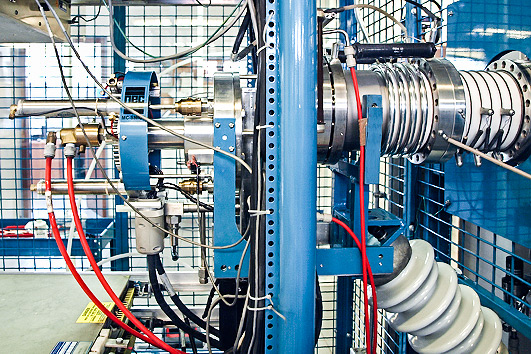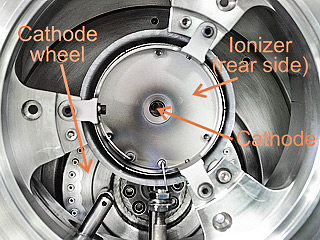Our AMS spectrometer is equipped with the MC-SNICS ion source, manufactured by National Electrostatics Corporation. It produces beams of negatively charged carbon ions from carbon cathodes earlier prepared from samples to be dated, and directs them towards the injection magnet. The source can be loaded with 40 cathodes.

Use of negatively charged ions is an important element of 14C AMS technique. Classical mass spectrometers deal with positively charged ion sources. One by-product of those ion sources is positive ions of nitrogen (14N), with the mass undistinguishable from 14C. Though extremely small in high-vacuum, number of nitrogen ions is significant with respect to that of 14C, and would preclude precise 14C measurements. Luckily, nitrogen does not form negative ions!

In the source, atoms of carbon are sputtered from the cathode by cesium ions. Atoms of cesium flow from a hot (ca. 190°C) cesium container into the source centre, where they easily lose electrons in strong electric fields near hot surface of the ioniser. Configuration of electric field focuses beam of cesium ions Cs+ on a 0.5mm spot at the cathode surface. The sputtered carbon atoms are then negatively charged by free electrons, and are extracted out of the source. Additional electrode is used to focus the carbon beam. Most produced ions are single charged (12C–, 13C–, and 14C–) and have energy of 55keV.

Other pages on the AMS spectrometer:
General | Ion source | Injection magnet | Accelerator | Analysing magnet | Drift tube | Electrostatic analyser | 14C detector
